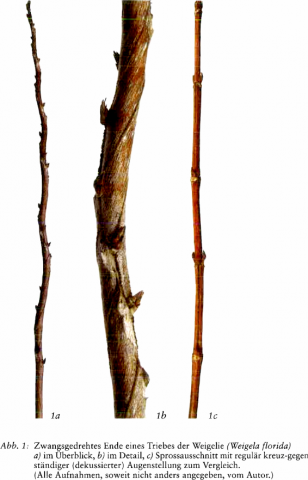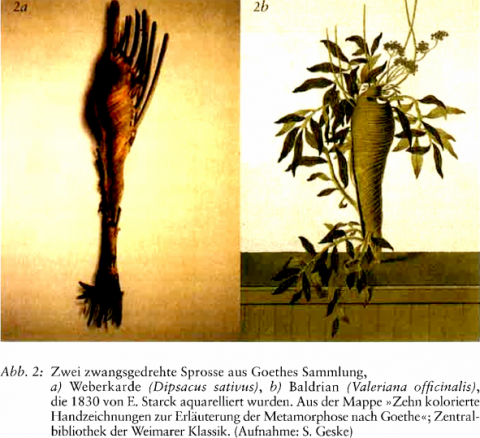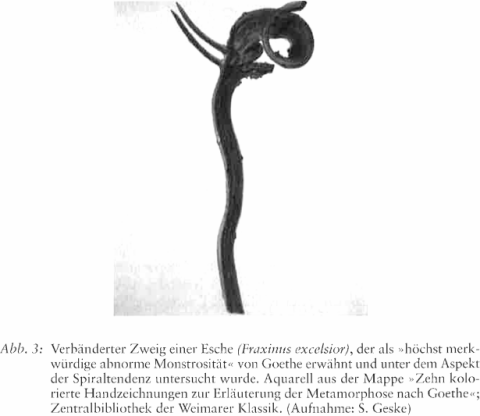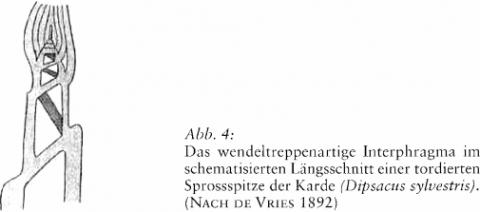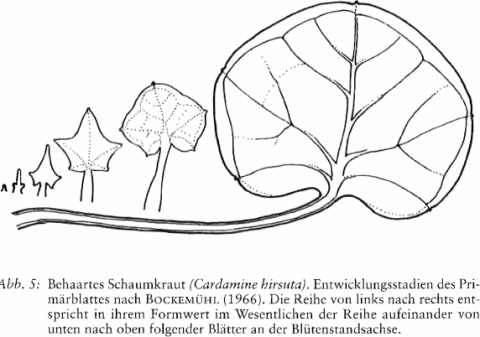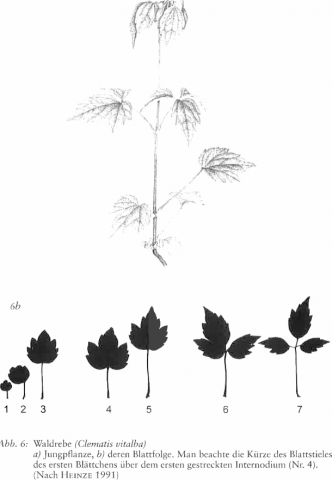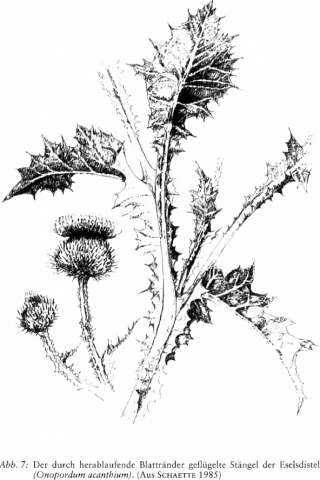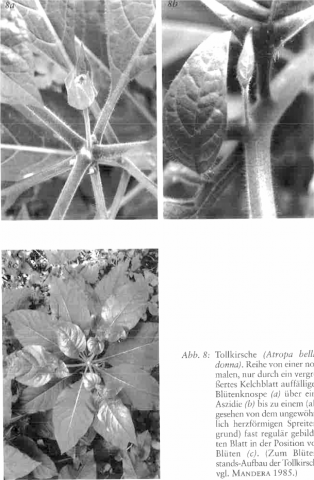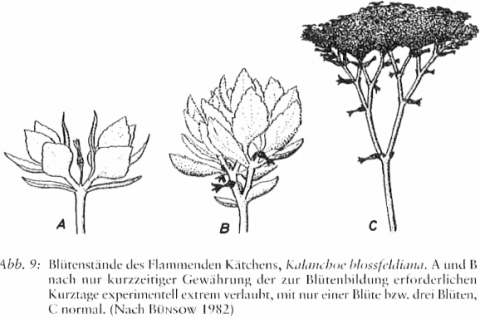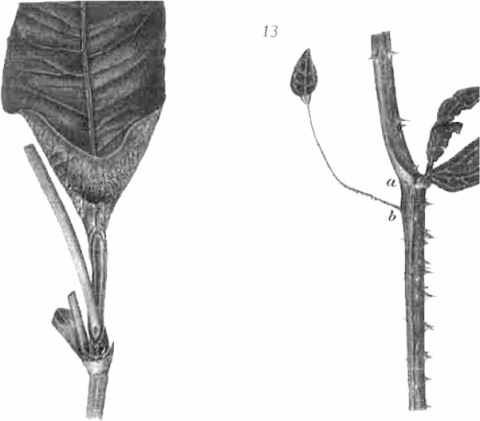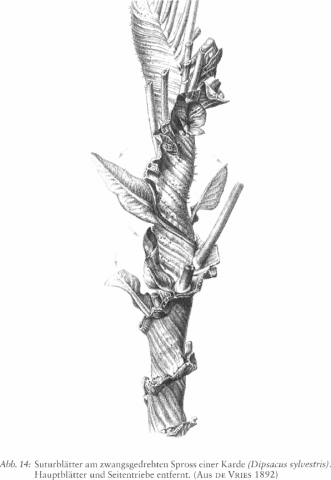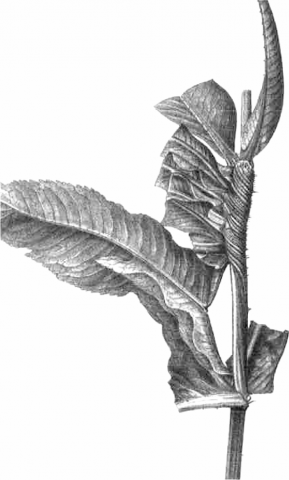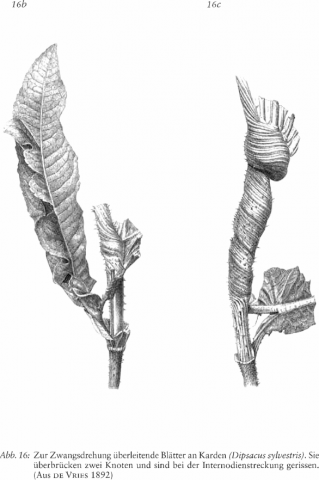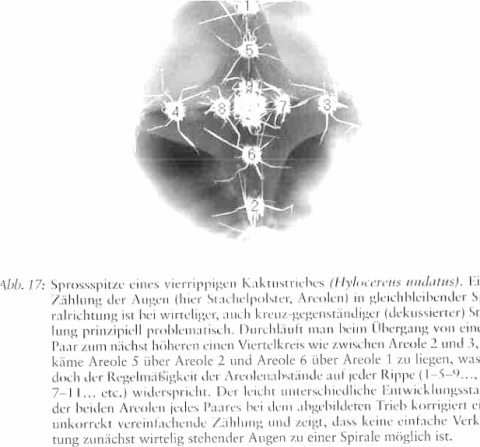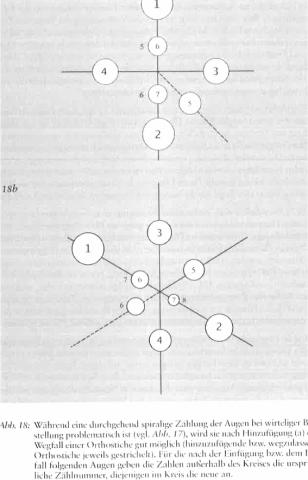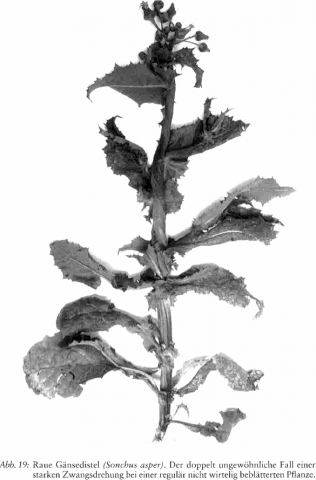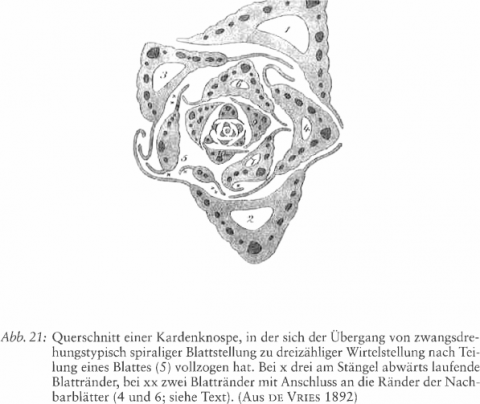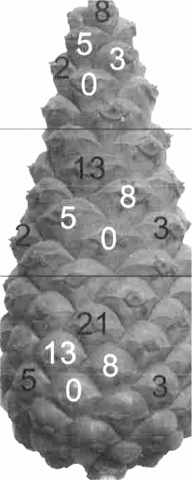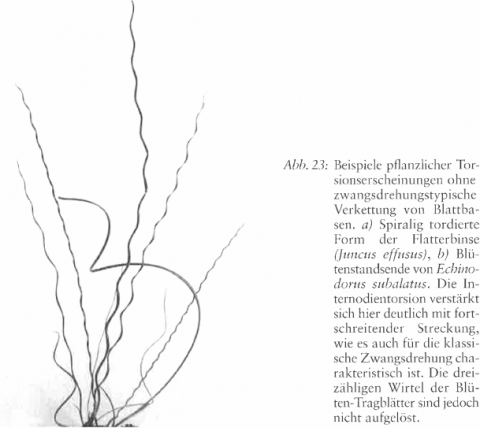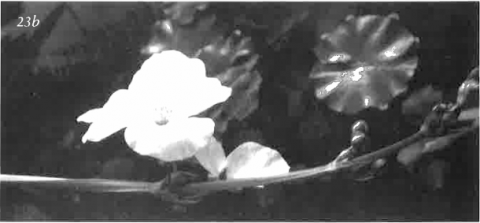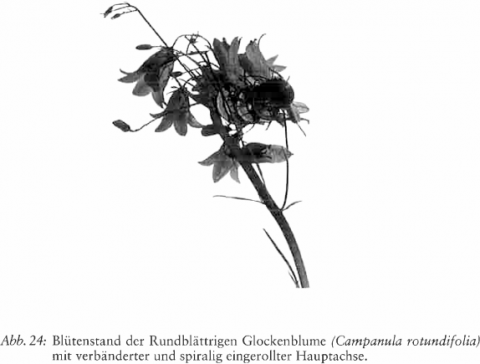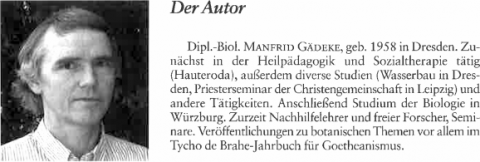Knoten und Internodium
Zu Goethes Begriff der Spiraltendenz
Export Article Citation as
- Download price : €6
Abstract:
Nodes and internodes — on Goethe’s concept of the spiral tendency
Starting from the interesting phenomenon of biastrepsis (‘Zwangsdrehung’), the helical twisting of shoots, in which the rhythm of node and internode formation in the plant shoot deviates from a kind of continuum of both elements, we discuss the question of the eonditions for this regular rhythm. By presenting transitional series, we try to show that there is no separation in principle between, on the one hand, the continuation of a main shoot ending in a flower through a side shoot, and, on the other hand, the continuation of a leafy shoot through further stem internodes. The end of the main shoot, which separates the flower or a group of flowers from the continuing side shoot, is thus compared with the leaf petiole, the flower itself with the leaf blade. Based on the phenomena, for the particular terminal organ structures we assume that through an integrating richness of previously successively arising individual organ structures a dominance is presewed, which also does not at first allow independent side shoots to emerge in its vicinity, but instead includes them in itself. Only after sufficient maturation of the terminal organ structure can previously non-integrated older secondary meristems send out shoots. Various observations suggest that even the stimulus for such new shoots arises from the terminal organ. Corresponding to the basal break out of enclosed end buds in funnel-shaped leaves or pitcher-like leaves (ascidia), we assume that unused central organ structures from the terminal organ break out sideways and can unite with and strenghten older secondary meristems. Disturbances of the rhythmic interchange of (terminal) organ formation, and continuation of growth, are now explainable as a result of premature emancipation of normal shoot structures that are yet to be integrated in the terminal organ. They can be caused just as much by excessive nourishment of the latter as by a deficiency of integrative power of weak terminal organs. They lead to both incomplete (terminal) organ formation, and incomplete continuation ot growth. The respective ineomplete organs of, on the one hand, spreading, and on the other hand shooting, maintain an abnormal connection with one another and lead to growth restricted to spiral forms. For Goethe’s relevant statements on the observed phenomena, his deep insight can become clear in the underlying processes. We try to show that apparently contradictory observations of later researchers, when consistently thought through, lead to interpretations that confirm Goethe’s ideas in a wholly new way, whilst also helping to avoid the wrong interpretations of them that first suggest themselves.
References
- BERGMANN, G. (1989): Metamorphosen der Zahlemgesetzmäßigkeiten in den Organstellungen. In: Tycho de Brahe-Jahrbuch für Goetheanismus 1989: 150-165. Niefern-Öschelbronn
- BOCKEMÜHL, J. (1966): Bildbewegungen im Laubblattbereich höherer Pflanzen in: Elemente der Naturwissenschaft Nr.4. Dornach
- BÜNSOW, R. (1982): Die Bedeutung des Blühimpulses für die Metamorphose der Pfalnzen. In: Schad, W. (Hrsg.), Goetheanistische Naturwissenschaft, Bd.2 (Botanik): 97-114. Stuttgart
- GÄDEKE, M. (1993): Einzelblüte und Blütenstand als Polarität. Tycho de Brahe-Jahrbuch für Goetheanismus 1993: 227-270. Niefern-Öschelbronn
- GÄDEKE, M. (1994): Ein Vexierblatt und verwandte Phänomene. Tycho de Brahe-Jahrbuch für Goetheanismus 1994: 74-91. Niefern-Öschelbronn
- GÄDEKE, M. (2002): Goethes Urpflanze und der Bauplan der Morphologie. In: Heusser, P. (Hrsg.), Goethes Beitrag zur Erneuerung der Naturwissenschaften, S. 107-129. Bern, Stuttgart, Wien
- GÄDEKE, M. (2002): Streptocarpus mit Brutblatt. Tycho de Brahe-Jahrbuch für Goetheanismus 2002: 158-179. Niefern-Öschelbronn
- GÄDEKE, M. (2005): Spuren des Chronos im Wurzelbereich. Tycho de Brahe-Jahrbuch für Goetheanismus 2005: 7-69. Niefern-Öschelbronn
- GÖBEL‚ TH. (1985): Zum Herzheilmittel Cardiodoron: Metamorphose-Prinzipien im Pflanzenreich und die Primelgewäche. Tycho de Brahe-Jahrbuch für Goetheanismus 1985: 106-183. Niefern-Öschelbronn
- GÖBEL‚ TH. (1990): Ein peltates Blatt an Sparnamia africana L. f. Tycho de Brahe-Jahrbuch für Goetheanismus 1990: 68-85. Niefern-Öschelbronn
- GOETHE, J. W. (1890): Goethes naturwissenschaftliche Schriften, hrsg. von R. Steiner, 1. Bd. Stuttgart
- GOETHE, J. W. (1964): Die Schriften zur Naturwissenschaft (Leopoldina-Ausgabe), Bd. 10. Weimar
- HEINZE, A. (1991): Zu den Keimpflanzen der gemeinen Waldrebe (Clematis vitalba L.) und der Berberitze (Berberis vulgaris L.). Tycho de Brahe-Jahrbuch für Goetheanismus 1991: 112-120. Niefern-Öschelbronn.
- HEINZE, A. (1996): Zum Phänomen der Einblättrigkeit in der Gattung Streptocarpus (Gesneriaceae).Tycho de Brahe-Jahrbuch für Goetheanismus 1996: 44-75. Niefern-Öschelbronn
- MANDERA, R. (1985): Die Nachtschattengewächse und das Bilsenkraut.Tycho de Brahe-Jahrbuch für Goetheanismus 1985: 164-209. Niefern-Öschelbronn
- NAPP-ZINN, K. (1959): Missbildungen im Pflanzenreich. Stuttgart
- TROLL, W. (1939): Vergleichende Morphologie der Höheren Pflanzen. 1. Bd., z. T. Nachdruck 1967. Königsstein/Taunus
- SCHAETTER, R. (1985): Die Körbchenblütler und die Eselsdistel unter besonderer Berücksichtigung der Distelartigen. Tycho de Brahe-Jahrbuch für Goetheanismus 1985: 210-244. Niefern-Öschelbronn
- SCHNECKENBURGER, S. (1998): In tausend Formen magst du dich verstecken - Goethe und die Pflanzenwelt. Palmengarten der Stadt Frankfurt am Main, Sonderheft 29. Frankfurt/M
- VIETH, J. (1998): Biastrepsis and allomery of stems of Dipsacus sylvestris Mill. In: Jean, R. V. & barabe, D., Symmetry in Plants 1998: 231-246. World Scientific. Singapore
- VRIES, H. DE (1892): Monographie der Zwangsdrehungen. In: Jahrbücher für wissenschaftliche Botanik, 23. Band (hrsg. von N. Pringsheim 1892): 13-206. Berlin
- WRETSCHKO, M. (1862): Zur Entwicklungsgeschichte des Laubblattes. In: Botanische Zeitung Bd. XXVI: 410. Leipzig

